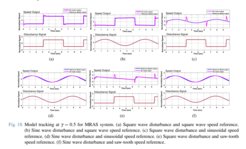Sariga Sachit
PhD student in the “Space Interferometry” group

What is your current position at our institute?
I'm a PhD Student in Space Interferometry group.
How and when did you choose to do physics?
Since middle school, I found my interest in technical education and physics. As every science enthusiast, space was also my fascination since childhood. Later I did my Bachelor's and Master's degree in Instrumentation Engineering in India and really was interested to pursue research in Astronomical Instrumentation. When the new era of gravitational-wave astronomy is inviting the world, I couldn’t resist myself falling to its field and I am here.
What is your academic education?
- Bachelor in Technology in Applied Electronics & Instrumentation Engineering
- Master in Technology in Applied Electronics & Instrumentation Engineering
What were your previous academic positions?
I am a recent post graduate and this is my first academic position
Can you please describe your research in language understandable to scientist from other fields?
The first and only inter-satellite optical interferometer flying in space is the Laser Ranging Interferometer (LRI) aboard GRACE Follow-On (GRACE-FO), developed with essential contributions from the PI institutes and launched in 2018. After the success of the LRI, the next generations of GRACE-like missions are firmly expected to use laser interferometry as the primary measurement principle. This project aims at building on the invaluable experience in designing, testing and operating the LRI to further enhance the functionality, performance and reliability of future instruments. I try to do experimental investigation on link acquisition, auxiliary modulation and absolute ranging that may open new avenues for orbit determination and data processing. I also research about the advancements in inter-spacecraft laser interferometry.
Is there a favourite figure from a paper you (co-)authored?

The figure shows the simulation results of an advanced adaptive algorithm called Model Reference Adaptive System [MRAS] implemented in a DC motor. Here the reference signal tracking is tested in worst-case scenario with external disturbance injection corrupting the control signal, and the proposed system exhibited good adaptation without delay. This is my favorite figure from the paper because this was a quite promising result after a long road.
Why did you choose the Max Planck Institute for Gravitational Physics for your research?
This was the dream institute for me and my ideal supervisor works here and hence I choose the institute. Definitely it’s like, getting a first-class ticket to the cutting-edge research and I didn’t want to miss the invaluable learning experience I could get from here. I was very much fascinated about the Gravitational wave Astronomy and would love to contribute in designing instrumentation for these mysterious waves.
What would you recommend to a young woman wanting to start a career in physics?
An entry to physics is like an entry to the never-ending adventurous journey, both beautiful and challenging. If my childhood fascination is turning a reality, then certainly will be yours. All we have to do is simply do what you love, enjoy the game and chase your dreams.
Learn more about Sariga Sachit's research at https://orcid.org/0000-0002-9737-373X

